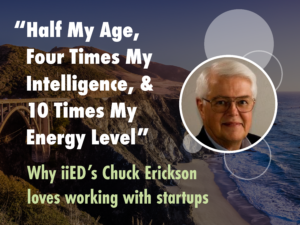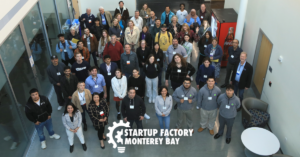Forget business plans. I’ll tell you why, and then tell you what to do instead. Read on.
For many years I’ve taught that writing business plans, while necessary for some purposes (like getting a loan from a bank), is not very useful in making your business successful.
I have based this claim on my own experience – when I’ve written business plans for my own businesses, they have mostly collected (digital) dust and have been honored more in the breach than in the observance, as the saying goes. The actual business always ends up looking different than I planned, as things worked out differently than I thought they would, opportunities I thought would be there weren’t, and unexpected opportunities arose.
I have also based my claim on Steve Blank’s maxim that “No business plan survives first contact with a customer,” which he adapted from Helmut von Moltke the Elder’s oft-quoted “No [battle] plan survives contact with the enemy.” Both of their quotes are based on the chaos that ensues when the unexpected happens – which it always does in battle and in business.
The Planning Fallacy
But there’s another reason why business plans don’t work (notice that I didn’t say business planning doesn’t work – more on that later). It’s related to the lack of predictability that Blank and Moltke the Elder refer to, but is rooted in how our mental decision-making apparatus works. Daniel Kahneman calls it the Planning Fallacy.
The Planning Fallacy is a function of what Daniel Kahneman calls our “System 1” mental process. System 1 values coherence over completeness (in fact, it confuses coherence with completeness, which is an even bigger problem).
We are the prisoners, not of what we don’t know, but of what we know.
What you see is all there is
When we plan, what we are doing is constructing a story about how the business will work. We try very hard to develop a coherent story, in which all of the parts fit neatly and lead to the clear conclusion that THIS BUSINESS WILL WORK AND WILL MAKE MONEY. And if we succeed in constructing such a story (I teach people how to construct these stories in my Pitch workshops), we believe it.
We believe it not because it’s true (that remains to be seen), but we believe it because it’s coherent. That response is hard-wired into our thinking process. Kahneman calls it “System 1 Thinking,” which is an automatic process that does not lend itself to second-guessing or doubt. If the saber-toothed tiger is about to eat us, System 1 tells us to run and not to ask questions. She who hesitates is eaten.
System 1 triggers an invisible mechanism that Kahneman calls “what you see is all there is.” You create your plan. You work diligently to make it a coherent story. Because it is coherent, to your mind it appears complete. Your mind can’t imagine that there’s something missing – because your mind confuses coherence with completeness. So, to your mind, what you see is a complete picture. What you see is all there is.

Coherence trumps truth
Of course, it will be the thing we didn’t think of that will come back to bite us.
If the story is coherent, we believe it. Not only do we believe it, and see it as complete, so do others, if we present it so that they see its coherence. That’s the basis of most business pitches. We make a coherent story, and unless others see what we’ve missed – and if we’ve told the story coherently enough their System 1’s will miss it also – they’ll accept the story and plunk down their money (we hope).
And if we’re pitching a story about a business that looks like other businesses that have become unicorns, all the better. Our investors’ brains will be even more inclined to accept the story at face value because of the fear of missing out (FOMO). That company was wildly successful in this business, they didn’t get to invest in that one, so they’d better invest in this one so they don’t miss out again. Or so their minds tell them.
What we don’t see is what isn’t there.
Policy makers have this same problem. I heard Janet Yellen speak this evening. Brilliant, careful thinker. She and the Fed have put in place analyses and systems that ensure that the next financial crisis will not come from over-investment in subprime mortgages, or South American debt, or any other source of financial crisis that we’ve seen before. But – what they see is all there is, and the next crisis will, of course, come from somewhere no one sees.

This also explains why your business will take longer to get started and cost more than you planned. Every start builds “conservative” sales forecasts to present to investors. Those forecasts look conservative, based on the business that they presented. And every one of them will prove to be drastically over-optimistic. Because the forecast is “conservative” based on what they know; it will be what they don’t know that will wreak havoc with the actual sales numbers.
What we see is all there is. But it’s what we don’t see that causes the errors.
Why Planning works – and how to do it.
Most, if not all, business plans are examples of the Planning Fallacy. The only thing we know FOR SURE about every business plan is that the business will not follow it. Because most plans are built on what the planners know, and the plan will be implemented in a world full of unanticipated unknowns.
But the process of planning is still very useful – if you pay attention to the Planning Fallacy. If you keep yourself aware that the more coherent the story is, the less likely it is to be the whole story. The real world is just not that coherent; it’s messy, it’s full of surprises that you didn’t anticipate and in fact – THIS IS IMPORTANT – couldn’t anticipate.
The world is a messy and complex system. In complex systems (think: weather), perfect forecasting isn’t difficult, it’s impossible.
Find the unknown unknowns
In good planning, you are looking to map out the knowns, find out what you don’t know (but you know you don’t know it, like how may potential customers there are), and find as many of the unknown unknowns as you can. You’ll never find all of them, but the more you find the higher your likelihood of success will be.
And be persistent. Persistence is the #1 predictor of success, because it’s the only thing that will finally conquer enough of the unknown unknowns to succeed. So when you meet the unknown unknowns, the unanticipated surprises, don’t be surprised – know that you are on the road to success.
Brad Barbeau is Associate Professor of Entrepreneurship at CSU Monterey Bay, and Executive Director of the CSU Monterey Bay Institute for Innovation and Economic Development. He is also the Principal and Founder of Ascend Business Design and Development.




